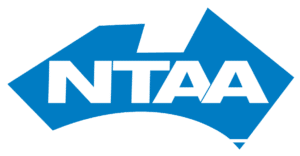[row]
[col span=”6″ span__sm=”12″ padding=”0px 0px 0px 0px” margin=”1px 0px -19px 0px”]
[ux_image id=”4998″ image_size=”medium”]
[/col]
[col span=”6″ span__sm=”12″]
[gap height=”40px”]
Legislation has been put in place to extend the JobKeeper scheme beyond its original sunset date, although the rates of payment and certain other details have been altered. The scheme is now to run until March next year, with one version lasting until 3 January and another version in place from then until 28 March.
[/col]
[/row]
[gap height=”15px”]
Enrollment
Businesses that have been enrolled in JobKeeper do not need to re-enrol to participate in the extended scheme, but the decline in turnover test has now changed from projected GST turnover to actual GST turnover. The decline in turnover percentage remains unchanged at 30% (or 15% for not-for-profits and 50% for entities with more than $1 billion aggregated turnover).
Re-test of Eligibility
Businesses will need to re-test their eligibility with reference to their actual turnover in the September quarter 2020 to be eligible for JobKeeper fortnights 14 to 20 (28 September 2020 to 3 January 2021).
Businesses are generally expected to assess eligibility based on details reported in their BAS, with alternative arrangements put in place for businesses that are not required to lodge a BAS.
Lodgement Time Frame
Worth noting however is that as the deadline to lodge a BAS for the September quarter or month is in late October, and the December quarter or month BAS deadline is in late January for monthly lodgers or late February for quarterly lodgers (or later under tax agent extensions), businesses will need to assess their eligibility for JobKeeper in advance of the BAS deadline. This may indeed put a great deal of pressure on businesses to complete their turnover results for the September 2020 quarter, but rest assured we are here to help.
Businesses will need to retest their eligibility with reference to their actual turnover in the December quarter 2020 to be eligible for JobKeeper fortnights 21 to 26 (4 January 2021 to 28 March 2021).
As with the first version of JobKeeper, the ATO will have discretion to set out alternative tests that would establish eligibility in specific circumstances where it is not appropriate to compare actual turnover in a quarter in 2020 with actual turnover in a quarter in 2019. The wage condition, based on the tier into which the eligible employee or business participant falls (see below), will continue to be required.
JobKeeper Fortnights 14 & 15
For JobKeeper fortnights 14 and 15, the ATO has extended until 31 October 2020 the time a business has to pay employees in order to meet the wage condition, so that they have time to first confirm their eligibility for the JobKeeper payment. And note that businesses that did not previously join the original JobKeeper scheme can join the new version of JobKeeper if they meet the eligibility criteria.
Payment Amount and Period
The new JobKeeper is a two-tiered payment arrangement based on average hours worked, on an employee-by-employee basis, in the four weeks of pay periods before either 1 March 2020 or 1 July 2020. See the table below for the payment tiers.
The period with the higher number of hours worked is to be used for employees with 1 March 2020 eligibility.
Payments for eligible business participants will be based on the same two-tiered payment arrangement, however the hours of active engagement to determine the payment rate will be based on the month of February 2020 only.
Businesses will be required to nominate which payment rate they are claiming for each of their eligible employees (or business participants). Employers must notify eligible employees of the payment to which they are eligible within seven days of notifying the ATO.
Business Participant
The ATO will have discretion to set out alternative tests where an employee or business participant’s hours were not “usual” during the February and/or June 2020 reference periods. For example, this will include where the employee was on leave, volunteering during the bushfires, or not employed for all or part of February or June 2020.
Other eligibility criteria for employees and eligible business participants will be consistent with the first version of the JobKeeper rules, bearing in mind the “1 July 2020” amendments (about eligible employees).
JobKeeper is a two-tiered payment arrangement
| 20 hours or more | Less than 20 hours | |
| JobKeeper fortnights 14 to 20 | $1,200 | $750 |
| JobKeeper fortnights 21 to 26 | $1,000 | $650 |
This information has been prepared without taking into account your objectives, financial situation or needs. Because of this, you should, before acting on this information, consider its appropriateness, having regard to your objectives, financial situation or needs.




